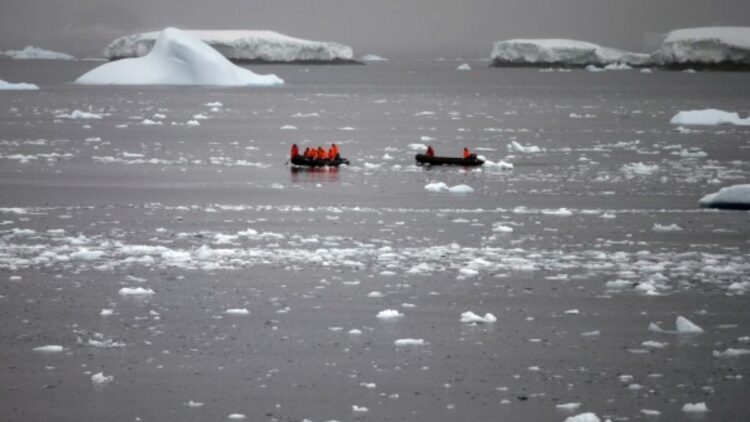Snow River.
Perth: 70 million years ago, scientists have made a new disclosure about the earth, snow rivers and life. Many scientists from Australia have made a big conclusion after deep research and study, knowing about which you will also be surprised to know. Scientists said that imagine that you are floating in space and a accumulated white ball is visible to you. It looks like a ball, alone and shiny. Actually it is an area covered with thick layer of snow. You are looking at the earth of the time of ‘cryogenian’ period 70 million years ago.
During the cryogenian period, when the huge icebergs flowed on the earth, our planet was submerged in deep snow. According to new research published in ‘Geology’, these destructive rivers of snow, sometimes deep, crush the planet’s rocky surface like huge bulldozers. When the snow finally melted, the minerals in the ground flowed into the oceans, which probably laid the foundation for a challenging and complex life.
Cryogenians flowed during the period, huge snow rivers
According to ‘Snowball Earth’ hypothesis, at least two huge global glaciers on Earth during the cryogenian period. The marks of these incidents can be seen in rocks built under ice -ice -world conditions around the world, which clearly indicate that the snow spreads from the poles to reach the equatorial region. Nobody certainly knows what the cause of these incidents was, although scientists have expressed many possibilities. One of the main reasons can be a significant decline in atmospheric greenhouse gases, especially carbon dioxide (CO2). The level of CO2 in the atmosphere may have dropped due to the increasing disintegration of rocks located on a large tropical continent at that time. When the continents are located in the tropical regions, the hot, moist conditions accelerate chemical disintegration, pull the CO2 out of the atmosphere, closing it in carbonate minerals.
When the planet became completely fierce
The tectonic activity during the breakdown of continents during this period would also have played a role in it. It would have created conditions like shallow sea, which would have separated the CO2 from the air. As the snow sheets moved towards the tropical regions, they reflected more sunlight in space, causing more cold. Due to these processes, the snow would have spread rapidly and the planet would have almost frozen. Volcanic activity would have played an important role in ending these ice age. As the iceberg would spread over the planet, the contact between the Earth’s layer, the oceans and the atmosphere would have gradually decreased.
Volcanic eruptions emerged when the emergence
According to scientists, when volcanic eruptions increased the amount of CO2 in the atmosphere, it was not re -absorbed, but it continued to freeze over millions of years. These high levels of CO2 created an uncontrolled greenhouse effect, causing the planet to heat up and eventually melt ice. As a result, the melting of ice increased the sea level rapidly and the nutrients flow into the oceans. Specific rocky structures were created during this sudden climate change. The growth of nutrients would have contributed to biological changes, which possibly designed a platform for the rise of complex life. Many scientists have noticed the idea that the melting of ‘snowball meaning’ changes in oceanic chemistry due to changes in atmospheric conditions.
What conclusions came out in new research
In the new research, scientists found that the material emanating from the continents during the melting would have also played a role in it. We studied old to new parts of rocks. By doing this, we made a picture of what the glacier and the subsequent river systems were doing on the surface of our planet. We discovered minerals on these sequences of rocks and found that when snowball events started and when the iceberg began to melt, there were frequent specific changes during the time period. When the glaciers retreat when melting, mineral particles come out due to massive flow of melted water that were trapped under ice and stabilized. When in contact with water, minerals dissolve and release chemicals.
This process – like changes in the atmosphere – must have changed the chemistry of the oceans. The retreat of glaciers helped shape the distribution of important elements for the maritime ecosystem. Humans on Earth have developed equipment and systems to reduce existence hazards such as climate change, famine, war and even asteroidal effects, yet effective use of these abilities is in our hands. The past explains how chemical cycles operate on our planet. Will we be able to show enough intelligence to use this information, it is yet to be seen. (The Conversation)
Latest World News










